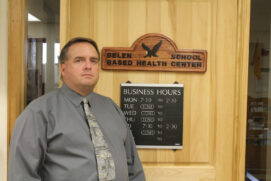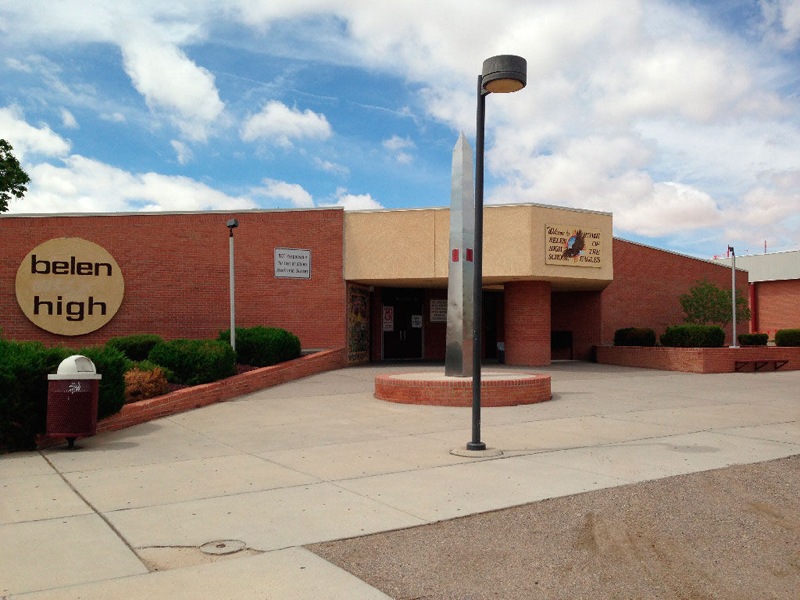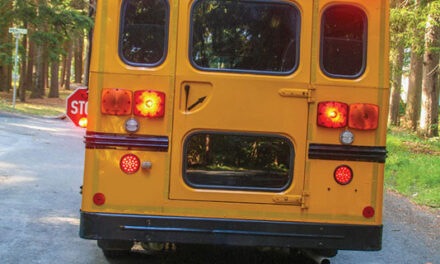BELEN — Eight months ago, the students and staff at Belen High School began the long process of overhauling the school’s learning systems and environment.
One of 10 high schools in the state to apply for and be selected to participate in a three-year training initiative, BHS is part of the New Mexico High School Redesign Network.
The network will help the school redesign its processes and systems, said principal Rodney Wright, to improve student learning, instruction and relationships between students and teachers.
“The redesign focus group at the high school includes teachers, students and administration,” Wright said. “This is student centered and driven. So far we have gathered 2,000 bits of feedback from students and parents.”
Last May, the New Mexico Public Education Department launched a the initiative and Belen High was awarded an initial planning grant of $100,000. In November, the school applied for an additional $439,000, the majority of which will be used for professional development of teachers and staff.
At a recent presentation for the handful of BHS parents who attended, Wright emphasized the redesign was a work in progress.

Rodney Wright
BHS chemistry teacher and redesign team member Stephen Boliver said the redesign is a long-term project, maybe nine or 10 years away from full implementation.
“We have an investment of more than 600 staff hours and just as many from students on the team. This is probably the first time in 23 years I’ve seen students and teachers driving what would happen with learning,” Boliver said. “It’s always kind of been a top-down process.
“But we can’t do alone. We have to have the support of students and parents, faculty and staff, building administrators, student support services, district leadership and board members.”
In order to redesign the school’s learning environment, the team first had to learn what students felt were problem areas.
The first, in academics, was painful to hear, Boliver said.
“Students are not understanding why learning is important. They are telling us they want information that will be useful in the real world, that a lot of what they are learning they feel is a waste of time,” he said. “That was painful to hear.”
Students were asked what are three ways BHS can help them meet their two-year goals.
The No. 1 answer was receiving training specific to careers after high school, such as nursing or auto mechanics.
Second on the list was training “to be an adult.” One student commented “… we don’t really learn many real-world skills until you’re in the real world.”
The third way the school could help students reach their goals was with later start times, the survey showed.
Classes at BHS currently start at 7:20 a.m., Wright said, which, after visiting other high schools, seems to be the exception not the norm.
“Studies have shown high school students usually aren’t fully awake and ready to go until later in the morning,” the principal said.
Research from the National Sleep Foundation showed the optimal amount of sleep for a teenager was 9.25 hours, meaning a 7:30 a.m. start time, accounting for travel, would mean the average high school student needed to be in bed by 9 p.m.
With sports, homework and jobs, that kind of schedule might not be realistic for most students, Wright said.
“This is a district-wide discussion because it’s not just BHS’s start time; pushing back our time would effect all the other schools and we know that,” he said. “This is an ongoing discussion.”
To address the question of “why do I have to learn this?” Boliver said the redesign team was working to change the vision of the school.
“Instead of just getting a diploma, then deciding what you’re going to do, we want to create career pathways — a pathway to success as an adult.”
To create those career pathways, the team is proposing the use of academies, such as STEM, fine arts, humanities and business and manufacturing.
“These aren’t set in stone,” Wright said.
Boliver pointed out that students, once they chose an academy and subsequent career path, wouldn’t be “locked in” to that path.
Nadine Lueck, a BHS teacher, said the survey showed students are craving more adult connections.
“We currently use peer mentoring, which is not working,” Lueck said. “The survey results show students feel teachers don’t care, aren’t engaged and don’t apply themselves.”
Part of the proposed redesign is a longer, weekly advisory period for students, known as Eagle Success Period.
Advisory groups would be formed within the academies and within similar interest groups, Lueck said, and serve grades 9 through 12.
“That way students can make natural mentoring connections with their peers,” she said.
To better focus on math and English language arts, the two subjects the high school scores lowest on in standardized testing, the team is contemplating a modified block schedule that would put students in their math and ELA classes every day, with electives and other classes every other day.
Other issues identified by students the team wants to address with the redesign include students often being hungry by mid-morning, well before lunch.
Wright said they envision a 10 to 15 minute passing period around 10 a.m. so students could grab a convenient, nutritional snack to tide them over until lunch
The idea would be to have food carts in each of the major buildings so students don’t have to try to crowd into the cafeteria.
Lueck said the high school’s current media center is very under used.
To make better use of the space, the team is considering rearranging it to mimic media centers and libraries on college campuses, which have small group areas, conference/workrooms for group work, such as practicing presentations, and power and connectivity access throughout the space.
In the student survey, they identified a lack of resources for homework/support at home, tools, appropriate environment for doing homework as one of the top three things that makes it hard to learn during the school day.
The redesign concept includes short and long term rentals of lap tops and other equipment, as well as professional development and training for teachers so they are familiar with current technology.
“All of this is in the early stages. Nothing is set. This is still in flux. We want more input from parents, students, community members. This is not the last meeting, by far,” Wright said.
Information about future High School Redesign Network presentations, and other academic activities, can be found on the Belen High School’s Eagles Facebook page.
“At the end of the day, everything is focused on who is most important — our students,” the principal said.
The schools that are part of the redesign network were identified by PED for Comprehensive Support and Improvement, a category for low-performing schools. The redesign network is intended to move the schools out of CSI.
One of its main goals is to help raise graduation rates, as the schools’ rates are below 67 percent.
Belen High School’s graduation rate for 2017 was 71.4 percent, an increase from 66 percent in 2016.
The state has put aside $4 million in federal funds for the schools over the next three years. PED is partnering with Johns Hopkins University’s School of Education Cross-State High School Redesign Collaborative and with schools across the state.
Julia M. Dendinger began working at the VCNB in 2006. She covers Valencia County government, Belen Consolidated Schools and the village of Bosque Farms. She is a member of the Society of Professional Journalists Rio Grande chapter’s board of directors.


















